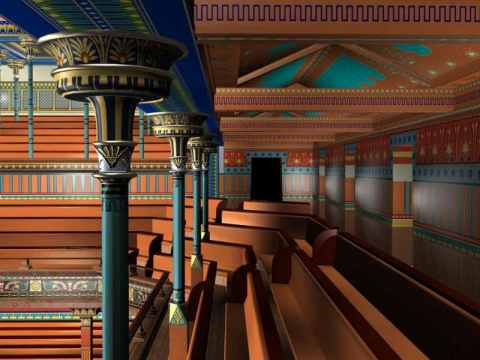|
Alexander "Greek" Thomson |
||
|
|
|
|
|
|
This site is an interactive electronic multimedia
|
allow a few seconds to load applet |
|
|
Alexander Thomson is now regarded as one of the outstanding individual voices of nineteenth-century architecture. His designs for villas, churches, tenement blocks and warehouses were highly innovative. Stylistically his designs were rooted in the Greek Revival, but he looked for inspiration in architectural styles far beyond Europe. He remained Glasgow's architectural hero until the rise of International Modernism, of which style he was one of the great forerunners. In his use of new kinds of expressive detail and decoration, new ways of handling materials, and particularly in his early recognition that architecture could not develop simply by reinterpreting traditional themes, Thomson is a major architectural figure. The images on this web site have been generated from the computer model of the Thomson's Queen’s Park United Presbyterian Church interior created for the inaugural exhibition at The Lighthouse in Glasgow in 1999. Queen’s Park Church was hit by a stray incendiary bomb in 1944, and burnt to the ground. Animation sequences created from this reconstruction were used in the Lighthouse exhibition, and were included in a new film about Alexander Thomson called "Ninevah on the Clyde", by the Scottish Film Director Murray Grigor. A new Internet based catalogue system provides the vehicle for accessing these records, which include computer visualisations with notes by the Architectural Historian Gavin Stamp, and internet optimised animation sequences. The catalogue also includes scans from the only four remaining black and white photographs of the interior of this extraordinary building. Thomson was a very prolific architect as well as being a very inventive one. In a large output, certain designs remained unrealised. Other completed buildings have disappeared in the century-and-a-quarter since his death. His few built public works have suffered disproportionately, and of his three churches only one survives intact. His domestic work and commercial architecture is better represented. It is our intention to add reconstructions and other relevant information to this catalogue as funds become available to do so. |
|
|
|
See also:- |
|
|
|
|
|
|
|
|
|
|
|
|
|
|
|
|
|
|
|
|
|
